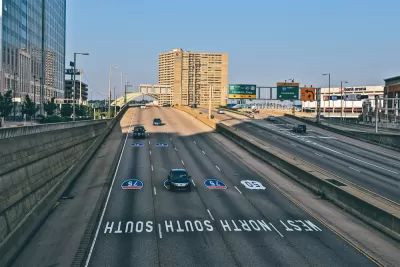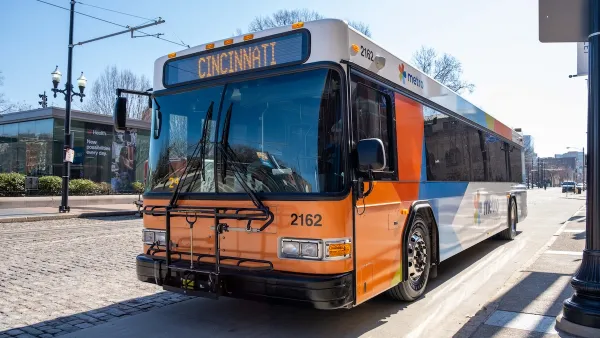Cincinnati's recently launched, $109 million capital investment plan will leave the vision laid out by the city's 2010 Bicycle Transportation Plan in the dust.

Randy Simes reports on the commencement of a six-year, $109 million Capital Acceleration Plan in Cincinnati, which represents a strategic policy shift and "a large infusion of money into road repair." Adds Simes: "The new focus on preventive maintenance is particularly noticeable as it represents an eight-fold increase in spending on that front."
Simes also details the types of project funded by the program, including $10.6 million for street rehabilitation and $4 million for preventive maintenance in the next year, as well as improvements for 940 center-line miles of streets over the next six years.
The article is not entirely focused on celebrating the program as a win for the city and for transportation infrastructure. Rather, Simes elaborates on the plan as a missed opportunity for bike infrastructure. Despite the city of Cincinnati’s Bicycle Transportation Plan "[calling] for incremental improvements to the city’s bike network as road resurfacing projects take place," the city "has fallen woefully behind on the implementation of the recommendations made in the Bicycle Transportation Plan." In fact, according to Simes, the priorities of mayor John Cranley are focused on off-street recreational bike trails, rather than on-street bike infrastructure.
FULL STORY: Cincinnati’s $109M Capital Acceleration Plan Ignores Adopted Bike Policy

Planetizen Federal Action Tracker
A weekly monitor of how Trump’s orders and actions are impacting planners and planning in America.

Chicago’s Ghost Rails
Just beneath the surface of the modern city lie the remnants of its expansive early 20th-century streetcar system.

San Antonio and Austin are Fusing Into one Massive Megaregion
The region spanning the two central Texas cities is growing fast, posing challenges for local infrastructure and water supplies.

Since Zion's Shuttles Went Electric “The Smog is Gone”
Visitors to Zion National Park can enjoy the canyon via the nation’s first fully electric park shuttle system.

Trump Distributing DOT Safety Funds at 1/10 Rate of Biden
Funds for Safe Streets and other transportation safety and equity programs are being held up by administrative reviews and conflicts with the Trump administration’s priorities.

German Cities Subsidize Taxis for Women Amid Wave of Violence
Free or low-cost taxi rides can help women navigate cities more safely, but critics say the programs don't address the root causes of violence against women.
Urban Design for Planners 1: Software Tools
This six-course series explores essential urban design concepts using open source software and equips planners with the tools they need to participate fully in the urban design process.
Planning for Universal Design
Learn the tools for implementing Universal Design in planning regulations.
planning NEXT
Appalachian Highlands Housing Partners
Mpact (founded as Rail~Volution)
City of Camden Redevelopment Agency
City of Astoria
City of Portland
City of Laramie





























